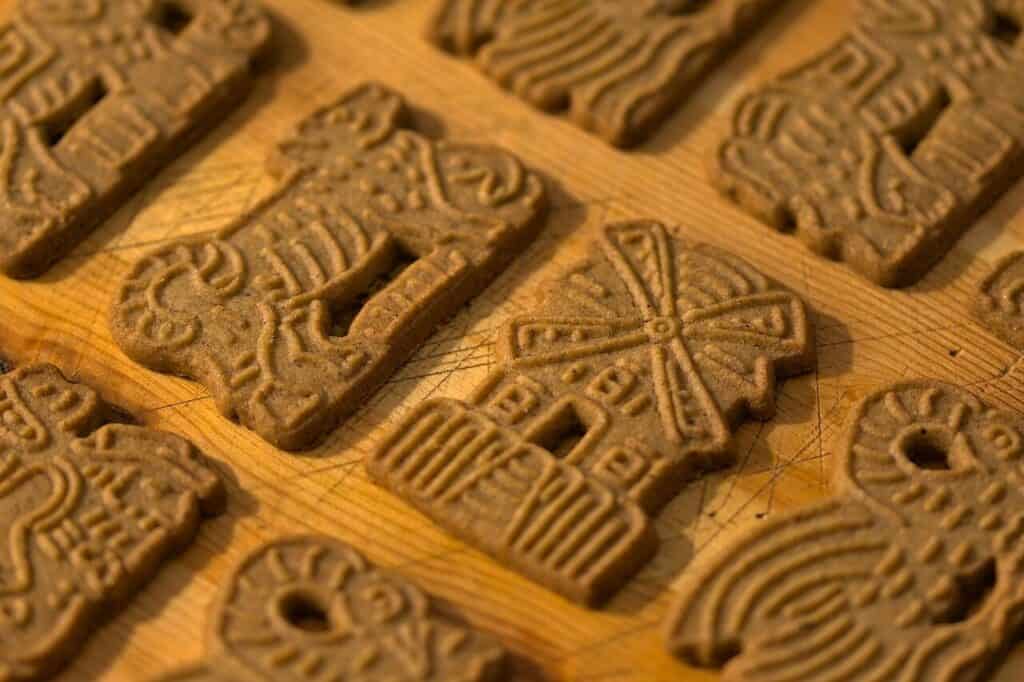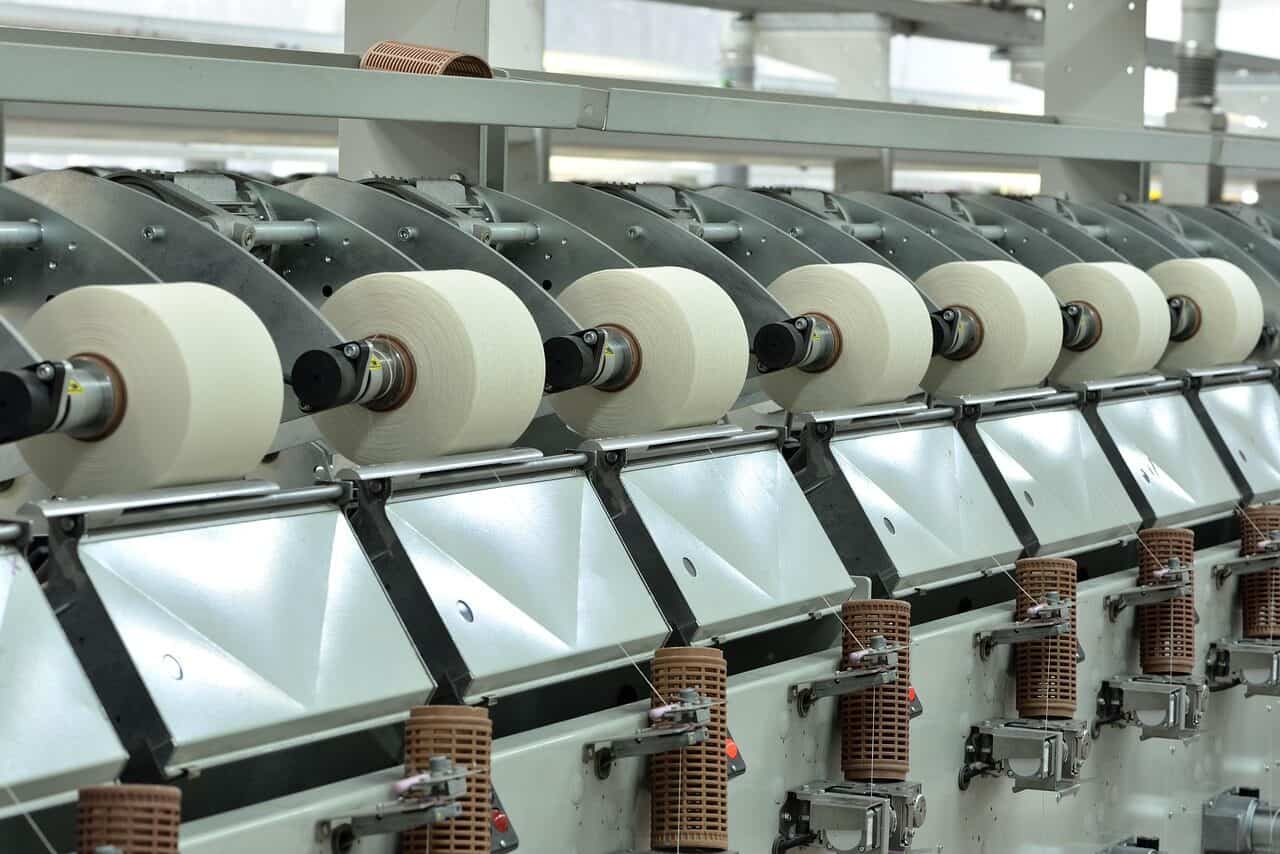Uma fábrica produz biscoitos de várias maneiras diferentes. Os principais componentes de um biscoito são farinha, açúcar, gordura, água e fermento químico. Os processos de fabricação e as composições das fórmulas dos biscoitos variam. Esses ingredientes principais se combinam para criar o cookie perfeito. De fato, um cookie típico contém apenas quatro componentes básicos: farinha, gordura, água e açúcar. Os ingredientes finais incluem uma variedade de outros ingredientes, como agentes corantes e aromatizantes.
Processo de fabricação cookies em fábricas

O processo de fabricação de cookies em fábricas envolve várias etapas. Primeiro, a massa é estendida. Em seguida, ela é moldado usando uma máquina rotativa ou de estamparia. Estamparia as máquinas usam massa pré-enroladaEnquanto as máquinas de moldagem de massa (FPL) extrudam a massa por meio de um modelo com diferentes formatos. Depois que a massa é estendida, os pedaços de massa são colocados em estênceis aquecidos ou em esteiras transportadoras de malha de forno. Os biscoitos prontos são então embalados em caixas ou pacotes.
Em linhas mecanizadas de fluxo, as matérias-primas são alimentadas em máquinas de amassar. A massa é preparada a partir de farinha e amido, bem como pela preparação de emulsões do restante das matérias-primas. A preparação da emulsão envolve a mistura de dois líquidos com diferentes forças coesivas intermoleculares. Isso garante que as duas matérias-primas tenham distribuição igual e possam ser processadas facilmente. Depois que a massa é misturada, ela passa pela inspeção de qualidade e embalagem.
A próxima etapa da fabricação processo é um processo conhecido como mistura. Nessa etapa, a massa é misturada em diferentes velocidades para produzir diferentes tipos e tamanhos de biscoitos. Dependendo da farinha utilizada, pode levar de dez a quinze minutos para misturar a massa. Depois de misturada, os trabalhadores a colocam em caixas e embrulham os biscoitos. Quando terminam, os biscoitos são enviados para as máquinas de embalagem e distribuição.
Ingredientes em biscoitos
Receitas de biscoitos contêm três ingredientes básicos: farinha, açúcar e gordura. Outros ingredientes incluem fermento, ovos, líquidos, nozes e chocolate. Ingredientes frescos são essenciais para o sucesso de um biscoito. Ao selecionar uma receita de biscoito, procure o rótulo para ver se ele menciona “ingredientes adicionais”.
O açúcar é usado para deixar os biscoitos macios e mastigáveis. A manteiga nos biscoitos atua como lubrificante e como agente aerador. Ela retém as células de ar durante a mistura e atua como um núcleo para os fermentos químicos. Essa etapa é fundamental para o volume e a textura. Os adoçantes são um componente essencial da massa de biscoito e variam de 17 a 30% em uma base sólida. O Tipos de adoçantes usadas variam de acordo com a receita.
Outras gorduras afetam o sabor e a textura do biscoito. A manteiga faz um biscoito achatado que se espalha quando colocado em uma assadeira quente. A gordura vegetal não se espalha tão facilmente e não adiciona sabor. A gordura vegetal tem um ponto de fusão mais alto, então cria um biscoito mais fofo. A gordura vegetal também é mais barata que a manteiga, mas você tem que ter cuidado porque ela não é tão saborosa.
Custo de fabricação de biscoitos em fábricas
Uma fábrica faz biscoitos para viver. Existem duas maneiras principais de calcular o custo de um biscoito: estimando o custo por biscoito ou dividindo os custos dos ingredientes pelo número de biscoitos sendo assados. Esta última é a opção mais barata, pois pode economizar tempo e dinheiro. Mas há certos outros fatores que devem ser levados em consideração ao calcular o custo por biscoito. Por exemplo, o equipamento usado para fazer os biscoitos também precisa ser estimado.
Embora os biscoitos feitos em fábricas geralmente sejam feitos com ingredientes melhores, eles podem ser caros. Por exemplo, um único biscoito pode custar $14. Mas se você vendê-los por sete centavos cada, você pode esperar ter pelo menos $50 de lucro por dúzia. Um trabalhador de fábrica pode ganhar até $15 por hora. No entanto, muitas pessoas não podem pagar para contratar um funcionário para trabalhar por um salário tão baixo. E se você não tem uma fábrica, você sempre pode ir para um local afastado.
A fabricação de biscoitos exige uma fabricação precisa, desde a mistura da massa até o cozimento e a embalagem. Em caso de erros, você pode acabar perdendo dinheiro. No entanto, com maquinário de qualidade e confiável, você pode evitar perdas e colher o máximo de lucros do investimento. Então, ao pensar em abrir uma fábrica, tenha em mente os seguintes fatores:
Fatores a considerar ao iniciar uma fábrica de biscoitos
1. Equipamentos e tecnologia
O sucesso de uma empresa de fabricação de biscoitos depende muito do tipo e da qualidade dos equipamentos utilizados. As principais máquinas incluem misturadores de massa, máquinas de moldagem rotativa, fornos de cozimento, transportadores de resfriamento e máquinas de embalagem. As fábricas modernas também usam linhas de fluxo automatizadas com sistemas de controle PLC para melhorar a eficiência e a consistência. Investir em fornos com eficiência energética e sistemas de pesagem de precisão ajuda a reduzir os custos e a manter a qualidade do produto.
2. Matérias-primas e cadeia de suprimentos
O fornecimento confiável de matérias-primas, como farinha, açúcar, gordura e aromatizantes, é essencial. Os fornecedores devem ser capazes de fornecer ingredientes de grau alimentício que atendam aos padrões de segurança. O estabelecimento de contratos de longo prazo com fornecedores locais pode ajudar a estabilizar os preços e garantir a produção contínua. Além disso, a manutenção de um sistema de armazenamento eficiente ajuda a evitar a deterioração e o desperdício de ingredientes.
3. Controle de qualidade e segurança alimentar
O controle de qualidade deve ser aplicado em todos os estágios - desde a seleção dos ingredientes e a preparação da massa até o cozimento e a embalagem. Isso inclui o monitoramento da temperatura, do teor de umidade e da consistência do peso. As fábricas devem seguir as diretrizes do HACCP (Análise de Perigos e Pontos Críticos de Controle) e cumprir as normas locais de segurança alimentar. As inspeções de rotina e os testes de laboratório garantem que os biscoitos atendam aos padrões exigidos de textura, sabor e prazo de validade.
4. Embalagem e marca
Embalagens atraentes e funcionais não apenas protegem os biscoitos contra danos e umidade, mas também aumentam seu apelo no mercado. As opções de embalagens flexíveis, como bolsas, bandejas plásticas e caixas de lata, são populares. O design da embalagem deve refletir a identidade da marca e exibir claramente as informações nutricionais e as datas de validade. Os materiais de embalagem sustentáveis estão se tornando cada vez mais importantes à medida que os consumidores se tornam mais conscientes em relação ao meio ambiente.
5. Gerenciamento de mão de obra e produção
Uma fábrica de biscoitos requer trabalhadores qualificados para a operação, manutenção e garantia de qualidade das máquinas. O gerenciamento eficiente da mão de obra garante uma produção consistente e reduz o tempo de inatividade. Devem ser implementados programas de treinamento para familiarizar os funcionários com as normas de segurança, práticas de higiene e técnicas modernas de produção. A automação pode ajudar a reduzir os custos de mão de obra, mas a supervisão e os controles de qualidade continuam sendo essenciais.
6. Demanda e distribuição do mercado
Antes de montar uma fábrica de biscoitos, é importante pesquisar a demanda do mercado e as preferências dos consumidores. Os cookies podem ser posicionados como lanches acessíveis, produtos premium ou alternativas voltadas para a saúde, dependendo do público-alvo. Os canais de distribuição podem incluir supermercados, lojas on-line, lojas de conveniência e mercados de exportação. O estabelecimento de parcerias com varejistas e atacadistas garante vendas estáveis e visibilidade da marca.
7. Planejamento financeiro e investimento
Abrir uma fábrica de biscoitos requer um investimento de capital significativo. As despesas incluem a compra de equipamentos, espaço na fábrica, serviços públicos, mão de obra e marketing. Um estudo de viabilidade detalhado e um plano de negócios são essenciais para estimar os custos iniciais, a capacidade de produção e o ponto de equilíbrio. O monitoramento contínuo dos custos e a otimização da produção podem ajudar a maximizar a lucratividade.
8. Sustentabilidade e inovação
As fábricas modernas de biscoitos se concentram cada vez mais na sustentabilidade - reduzindo o consumo de energia, minimizando o desperdício e adquirindo materiais ecologicamente corretos. A inovação em sabores, texturas e produtos preocupados com a saúde (como biscoitos sem glúten ou com baixo teor de açúcar) pode ajudar as marcas a se manterem competitivas. Investir em pesquisa e desenvolvimento permite a criação de novas receitas e embalagens que atendem às necessidades em constante evolução dos consumidores.
Com base nos resultados de minha pesquisa, aqui estão 10 backlinks confiáveis para fabricação de biscoitos e produtos de panificação com DA 40+:
- https://www.fda.gov/ FDA - Diretrizes de segurança alimentar e HACCP para produtos de panificação
- https://www.ams.usda.gov/ USDA - Padrões para massa de biscoito e produtos de panificação
- https://bakerpedia.com/ BAKERpedia - Produção de biscoitos e processos de cozimento
- https://www.ift.org/ Instituto de Tecnólogos em Alimentos - HACCP em padarias
- https://www.iso.org/ ISO - Padrões de gerenciamento de qualidade para fabricação de alimentos
- https://en.wikipedia.org/wiki/Cookie Wikipedia - Cookie
- https://www.sciencedirect.com/ ScienceDirect - Pesquisa em Panificação e Processamento de Alimentos
- https://www.ifsqn.com/ IFSQN - Rede de Segurança e Qualidade de Alimentos
- https://www.slideshare.net/ SlideShare - Apresentações sobre segurança de alimentos e BPF de panificação
- https://www.researchgate.net/ ResearchGate - Artigos de pesquisa sobre fabricação de produtos de panificação








